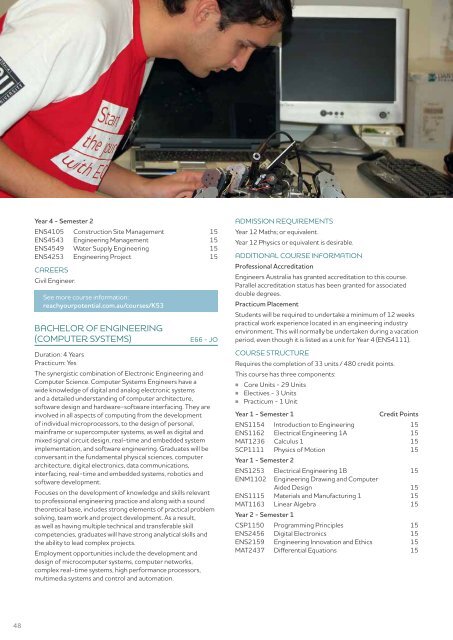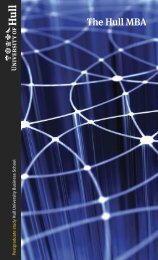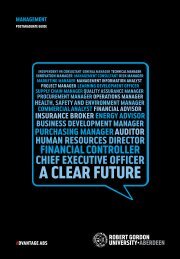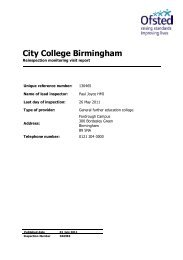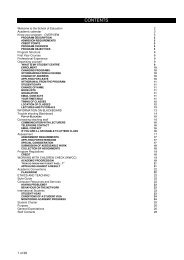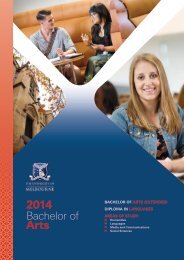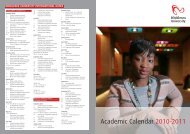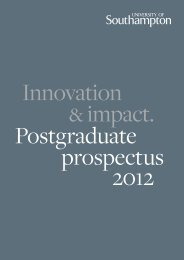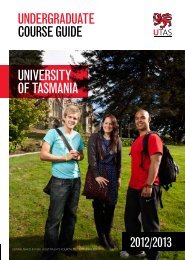undergraduate
undergraduate
undergraduate
- No tags were found...
Create successful ePaper yourself
Turn your PDF publications into a flip-book with our unique Google optimized e-Paper software.
Year 4 - Semester 2<br />
ENS4105 Construction Site Management 15<br />
ENS4543 Engineering Management 15<br />
ENS4549 Water Supply Engineering 15<br />
ENS4253 Engineering Project 15<br />
Careers<br />
Civil Engineer.<br />
See more course information:<br />
reachyourpotential.com.au/courses/K53<br />
Bachelor of Engineering<br />
(Computer Systems)<br />
E66 - JO<br />
Duration: 4 Years<br />
Practicum: Yes<br />
The synergistic combination of Electronic Engineering and<br />
Computer Science. Computer Systems Engineers have a<br />
wide knowledge of digital and analog electronic systems<br />
and a detailed understanding of computer architecture,<br />
software design and hardware-software interfacing. They are<br />
involved in all aspects of computing from the development<br />
of individual microprocessors, to the design of personal,<br />
mainframe or supercomputer systems, as well as digital and<br />
mixed signal circuit design, real-time and embedded system<br />
implementation, and software engineering. Graduates will be<br />
conversant in the fundamental physical sciences, computer<br />
architecture, digital electronics, data communications,<br />
interfacing, real-time and embedded systems, robotics and<br />
software development.<br />
Focuses on the development of knowledge and skills relevant<br />
to professional engineering practice and along with a sound<br />
theoretical base, includes strong elements of practical problem<br />
solving, team work and project development. As a result,<br />
as well as having multiple technical and transferable skill<br />
competencies, graduates will have strong analytical skills and<br />
the ability to lead complex projects.<br />
Employment opportunities include the development and<br />
design of microcomputer systems, computer networks,<br />
complex real-time systems, high performance processors,<br />
multimedia systems and control and automation.<br />
Admission requirements<br />
Year 12 Maths; or equivalent.<br />
Year 12 Physics or equivalent is desirable.<br />
Additional Course Information<br />
Professional Accreditation<br />
Engineers Australia has granted accreditation to this course.<br />
Parallel accreditation status has been granted for associated<br />
double degrees.<br />
Practicum Placement<br />
Students will be required to undertake a minimum of 12 weeks<br />
practical work experience located in an engineering industry<br />
environment. This will normally be undertaken during a vacation<br />
period, even though it is listed as a unit for Year 4 (ENS4111).<br />
Course Structure<br />
Requires the completion of 33 units / 480 credit points.<br />
This course has three components:<br />
• Core Units - 29 Units<br />
• Electives - 3 Units<br />
• Practicum - 1 Unit<br />
Year 1 - Semester 1<br />
Credit Points<br />
ENS1154 Introduction to Engineering 15<br />
ENS1162 Electrical Engineering 1A 15<br />
MAT1236 Calculus 1 15<br />
SCP1111 Physics of Motion 15<br />
Year 1 - Semester 2<br />
ENS1253 Electrical Engineering 1B 15<br />
ENM1102 Engineering Drawing and Computer<br />
Aided Design 15<br />
ENS1115 Materials and Manufacturing 1 15<br />
MAT1163 Linear Algebra 15<br />
Year 2 - Semester 1<br />
CSP1150 Programming Principles 15<br />
ENS2456 Digital Electronics 15<br />
ENS2159 Engineering Innovation and Ethics 15<br />
MAT2437 Differential Equations 15<br />
48


